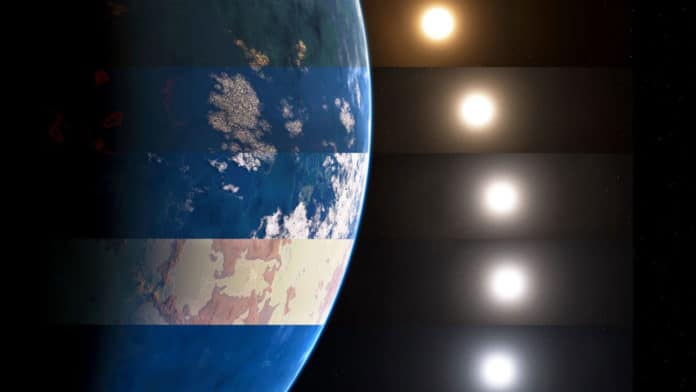Dozens of Earth-sized planets already discovered. The next is to search for life beyond our Solar system will be the characterization of the atmospheres of terrestrial planets and the search for signs of life on planets in the habitable zone (HZ).
After inspecting dozens of suns and a list of planet surfaces, Cornell astronomers have devised a practical model – an environmental color “decoder” – to tease out climate clues for conceivably habitable exoplanets in cosmic systems far away.
For the study, astronomers combined detail of a planet’s surface color and the light from its host star to calculate a climate.
For example, a rocky black basalt planet absorbs light well and would be sweltering, yet include sand or clouds and the planet cools; and a planet with vegetation and revolving around a reddish K-star will probably have cold temperatures because of how those surfaces reflect their suns’ light.
Lisa Kaltenegger, associate professor of astronomy and director of Cornell’s Carl Sagan Institute, said, “Depending on the kind of star and the exoplanet’s primary color – or the reflecting albedo – the planet’s color can mitigate some of the energy given off by the star. What makes up the surface of an exoplanet, how many clouds surround the planet, and the color of the sun can change an exoplanet’s climate significantly.”
“Forthcoming instruments like the Earth-bound Extremely Large Telescope will allow scientists to gather data to test a catalog of climate predictions.”
“There’s an important interaction between the color of a surface and the light hitting it. The effects we found based on a planet’s surface properties can help in the search for life.”
Journal Reference:
- Jack Madden, How surfaces shape the climate of habitable exoplanets? DOI: 10.1093/mnras/staa387
